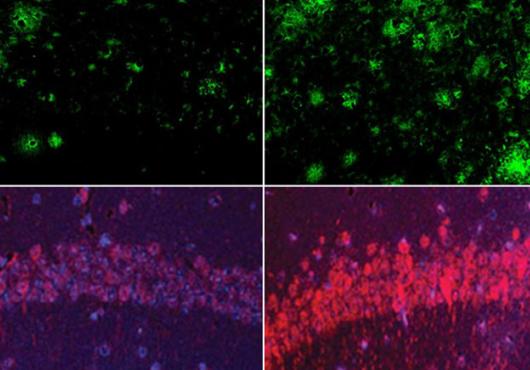The eye is its own master when it comes to keeping a circadian rhythm, according to a new study from the lab of Charles Weitz, the Robert Henry Pfeiffer professor of neurobiology at HMS. The work, published in the Aug. 24 Cell, shows that in mice, the eye clock ticks independently of the master circadian clock in the brain and regulates the expression of thousands of genes. Ultimately, this translates to periodic changes in the way visual information is relayed in the inner retina. The result is a level of local control that lets animals anticipate and prepare for the daily transition from dark to light and vice versa.
“The role of circadian clocks is to coordinate complicated systems in anticipation of regular environmental changes, like light and dark,” said Weitz. “We suspected that the retina uses its own time-keeping mechanism to locally control tissue-specific functions, and that’s what we found.”
In higher animals, a master clock in the brain controls sleeping, waking, eating, and other activities over a 24-hour cycle through the rhythmic production and destruction of clock proteins. Recently, researchers discovered that these proteins also cycle in many cells outside the brain, including the eye, heart, liver, and other peripheral organs. The physiological role of these clocks and the extent to which they are slaves of the master clock or operate independently was mostly unknown.
To find out what genes and pathways are regulated by the endogenous retinal clock, the investigators analyzed gene expression patterns in mouse eyes over a three-day span. Using large-scale microarray chips, they found that hundreds of genes were expressed rhythmically in the eye, even when the mice were kept in total darkness.
In mice that had the master clock cells in the brain destroyed, the retinal clock continued to run and generate daily variations in electrical activity in response to light. This indicated that the retinal clock operates separately from the brain’s main circadian cells.
The researchers then disabled just the retinal clock, using an eye-specific genetic knockout of one key clock protein. The result was to abolish the daily periodicity in gene expression. The knockout also affected eye function, disrupting the normal daily oscillation in electrical signals generated by the retina in anticipation of daybreak or nightfall.
Disrupting the retinal clock unexpectedly disturbed the expression of many genes that are normally regulated by light itself, giving the first clue that clock genes can regulate the response of broad swaths of the genome to environmental changes in a rhythmic way.
“Systems that can anticipate regular changes in the environment presumably have a big advantage over systems that passively respond to changes as they occur,” Weitz explained. “Our results indicate that the retina has taken the clock mechanism and is using it to take broad control of gene expression and functions.” The ability to make tissue-specific clock knockouts will allow the researchers to ask whether the same is true for other peripheral clocks.
Eye Clock Keeps Local Time
Stay Up to Date
© 2025 by The President and Fellows of Harvard College


